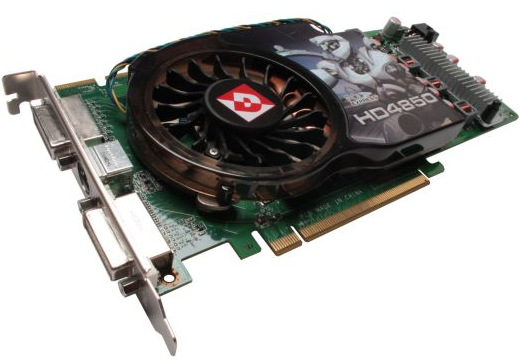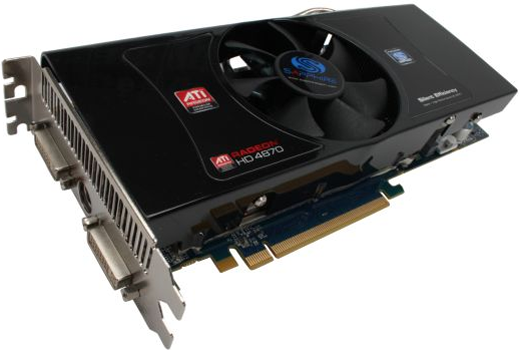Video Card Buyer's Guide - Spring 2009
by Derek Wilson on March 30, 2009 6:00 PM EST- Posted in
- Guides
For our ~$100 price point (plus or minus a bit) we are going to strongly recommend that people wait for about a month. This price point will be shaken up a bit in about that time and we really aren't comfortable recommending anyone purchase something in this market until sometime in early May. This may or may not further compress the sub $100 market, but there really isn't much more room down there, so we don't expect much change except at right around $100.
~$100 Recommendation: IT'S A TRAP!!! (wait about a month)

It just so happens that this price point is also the highest volume price point. Certainly neither AMD nor NVIDIA will be happy that we recommend waiting, but this is all about the consumer. If you are going to spend about $100 on a video card, just try really hard to wait a little bit longer.
From $130 to $150 we are looking at the a tightly contested price point. At the lower end of the spectrum, the Radeon 4850 gets our nod, while at the higher end the 1GB GTS 250 does perform slightly better in our tests (we do not recommend the 512MB variant though). Whether that slight difference in performance is worth the $20 difference in price really has to be up to the end user, but you get a much bigger bump by jumping up out of the price range to the ATI Radeon 4870 512MB at $165 (which is why we don't recommend the GTS 250 1GB at this point).
$130-$150 Recommendation: ATI Radeon HD 4850

| ATI Radeon HD 4850 | |
| PowerColor | $129.99 |
| Diamond | $159.99 |
| XFX | $169.99 |
This next bit is a little more tricky. Between $165 and $180 there exist the 4870 512MB and 4870 1GB. These cards perform nearly the same at lower resolutions, so for gamers with 1680x1050 and lower resolution monitors, we would recommend the 512MB variant with the caveat that some games are becoming memory hogs. The 1GB might be slightly more future proof, but it's really hard to say whether or not that will last beyond when you'd want to upgrade both either way when talking about 1680x1050 and lower.
$165 (At 1680x1050 and Below) Recommendation: ATI Radeon HD 4870

| ATI Radeon HD 4870 | |
| ASUS | $164.99 |
| HIS | $169.99 |
At resolutions above 1680x1050, the 1GB 4870 and the GTX 260 core 216 are both viable options that come in at $180. So save $20 at average to lower resolutions or make a choice based on the games you play (or preference for a hardware designer) at higher resolutions. NVIDIA and AMD really do trade blows depending on the games we choose to test, so if you want the best performance at this price point, you'll have to pick the games in which performance matters most to you.
$180 Recommendation: End User Preference (4870 1GB or GTX 260 core 216)










91 Comments
View All Comments
Hacp - Monday, March 30, 2009 - link
What about Cuda and Physix?SiliconDoc - Wednesday, April 1, 2009 - link
Don't say that - the red rooster strutters don't want to know what it is - don't mention Cuda, or Folding, or Warmonger, totally destructive enviroments, using your older 8 or 9 series NVidia as a physx card so never losing out buying up - just shush up the rd roosters are strutting about plucking eachothers chest hairs and waiting for the big green tractor to run them over for the last billion dollar ati loss time. Don't mention the crap ati driver issues or the CCC or the broken fixes every ding dang month when you finally get in a groove the bleeding quid idiots scrap it all again and remake a mistake.Just pat the little roosters on the head and tell them when they flap their wings they look real pretty and the chickenfeed is a plenty fer them. They don't have Ntune eiterh do they ? They have their hothead cards pusging electromigration - so even the red return door is revolving all the time - another chickseed hit.
You want a piece of crap, it's always the cheap bargain basement - and there's always a shuckster pushing it between lies.
Jorgisven - Wednesday, April 8, 2009 - link
I'm not really a fanboy of either. I get what works for my budget, but if I were an nVidia fanboy, I certainly wouldn't be pushing Cuda, or PhysX (see other Anand article) as they're totally overrated. There aren't enough games that make interesting use of PhysX (except maybe one), Cuda is still too proprietary as opposed to OpenGL. Yes nVidia's business model makes everyone gaga over their latest monolithic card, but when the performance numbers can't beat a cheaper card, it's tough to compete. On the other hand, ATI drivers have been the bane of many GPU purchases. Also, FYI, nTune is available on any nVidia product, GPU or not. I have the 780i and the HD4850 and I can use nTune just fine.Also, only somebody that knows nothing about value knocks the "bargain" cards. Who cares if you have a $3,000,000 Bugatti if it can be almost beat by the $100,000 tuner car with the right driver? Sure it looks cool and has some nifty buttons, but when push comes to shove, the only person who gets the Veyron is the guy with too much money to care. Good for him. Not everybody has the money to spend on it. And if something works nearly as good for a fraction of the cost, that is going to be the breadwinner in business, while maybe not the envy of coolness.
bigboxes - Monday, March 30, 2009 - link
There clearly was a nVidia recommendation. On the first page they recommended the 9600GT. However, they didn't feel it was any better or worse than the 4670. For the $180 price point they recommended the GTX 260 core 216 or 4870 1GB depending on which games you play. Lastly, they recommended the GTX 295 if you wanted the best. Unfortunately for nVidia fanboys the ATI equivalent does just about everything you would ever need at a much cheaper price point. In fact, the overall theme of this guide is that ATI provides the best performance/price. That's too bad that it upsets you. You shouldn't place too much importance in brand names and put more on the actual product. You'll be much happier.PopcornMachine - Monday, March 30, 2009 - link
Apparently there will be something new at $100, or something will be pushed down to that level, and I can't wait to hear about it.But, while the 4670 is a real nice low power card, the 4830 is already under $100 and a lot more powerful. There are 3 such models at NewEgg right now, including a Sapphire for $75 (with rebate).
So I really don't understand the recommendation of the 4670. If something so much better than the 4830 is going to be available for $100, then I would hold off on that purchase as well.
Zoomer - Monday, March 30, 2009 - link
More than likely the rumored 4750. :)frozentundra123456 - Monday, March 30, 2009 - link
I have an off the shelf system with only a 300w power supply. This makes the HD4870 attractive to me because it doesnt require an external power connecter. I only game at 1440 x 900 and lower.That said, I really liked the guide. However, to me it would be useful to include what kind of CPU is reqiured at the various levels of GPU performance. I know this would vary a lot from game to game, but it would not be useful to get a video card that the CPU cannot keep up with.
7Enigma - Tuesday, March 31, 2009 - link
That is one of the very few hardware articles I read on gamespot.com They (for the bigger titles) typically do a cpu/memory/gpu testbed that shows exactly what matters in a particular game. It is extremely enlightening to find out that for instance going from 1-2-4gigs of ram has, say, very little improvement, while going from 2.6-2.8-3.0GHz (cpu) has a much bigger impact. I would personally never build a system around a game (I'm sure some of you WOW players would), but what is really nice is to know what to temporarily overclock for better performance.josh6079 - Monday, March 30, 2009 - link
The HD4870 has two power connectors and you would probably need something more than a 300W power supply if you were to include it in your rig.RU482 - Monday, March 30, 2009 - link
pretty sure he means 4670 if he's mentioning a 300W PSU in an off the shelf system